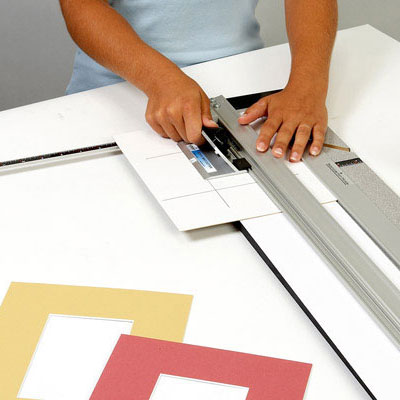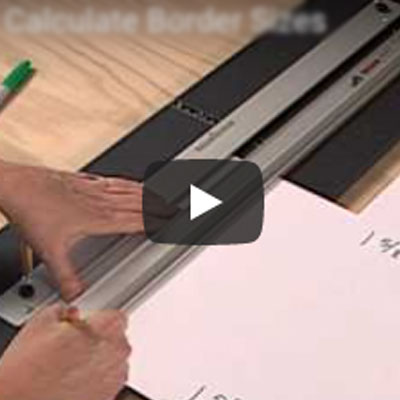All artwork put into a frame unit has to be supported. If artwork is packed in with backing, it will buckle. Some people believe that packing the frame very tightly will prevent buckles, but the reverse is true. The tighter the fit, the more it will eventually buckle and ripple.
Attachments should generally be made at the top of the art only, because artwork must be given room to expand and contract in response to changes in temperature and humidity.
Do not attach artwork on all four sides. Restriction of movement is the primary cause of buckling. Artwork must either be fully mounted or attached at the top edge. Do not use masking tape, cellophane tape or duct tape. Even if the item is worthless, these tapes will deteriorate and leave stains.
A practical tape for holding decorative reproductions in place is Scotch Magic Tape (permanent) or Lineco's gummed Linen tape (water reversible). Be careful not to stretch the tape, or it will contract later and wrinkle the picture. Lineco's Hinging Tissue is thin but permanent and can be used to hold many types of art in place. There are several methods for attaching artwork to its supporting board. Attaching artwork to the window mat is the easiest because it is easy to see when the artwork is centered properly in the opening. Attaching the art to the backing board takes a bit more time to center properly, but it is the preferred method because it is more supportive. The backing board is stronger because it is a solid sheet. The mat, with its window opening, is weaker; the artwork hanging from it pulls on the top of the mat, and can eventually sag. This is especially noticeable on larger pieces.
To position art correctly on the backing board, place the art on its backing, place the mat on top of the art, and adjust the artwork until it is correctly placed. Set a clean weight (such as a glass paperweight) on the art, and remove the mat. Attach the art to the backing board. If a reproduction that will be framed without a mat is under 11" x 14" and on a sturdy paper, it may be placed in the frame without support.
For art that is valuable or potentially valuable (the value may be monetary or sentimental) it is wise to consider using conservation attachment methods.
Most of the methods described here can be used for conservation framing, but the choice of materials is crucial.
Conservation attachments must be acid-free, and any portion that makes contact with the art must be completely reversible without damage to the art. In conservation framing, the art should be attached to a backing board made from Conservation or Museum (Rag) matboard. The T-hinge is the most common conservation attachment. Each hinge is made from two pieces of Japanese paper. Attach about 1/8"-1/4" of one piece to the upper edge of the art paper, horizontally. Attach the rest of the hinge to the backing board by using the second piece of paper as a horizontal crosspiece. Two hinges, one placed near each top corner, is typical. Larger pieces of art may require more hinges.
Artwork may be floated by attaching a V-hinge or a passthrough hinge. The pass-through hinge involves making a slit in the backing board and slipping the hinge or tape (attached to the artwork) through it. Attach hinges or tape to the upper back side of the art, slightly below the top edge. Place the art on the backing board, and mark the placement of the hinges or tape. Make slits in the backing board where marked, then pass the hinge or tape through the slits. It is then easy to adjust the placement of the artwork. Then secure the hinge with another piece of tape to the back side of the backing board.
Conservation hinges may be made from:
1. Torn Japanese paper strips and cooked rice or wheat starch.
2. Gummed Linen or Paper tapes. See page 20.
Both are water-reversible.












